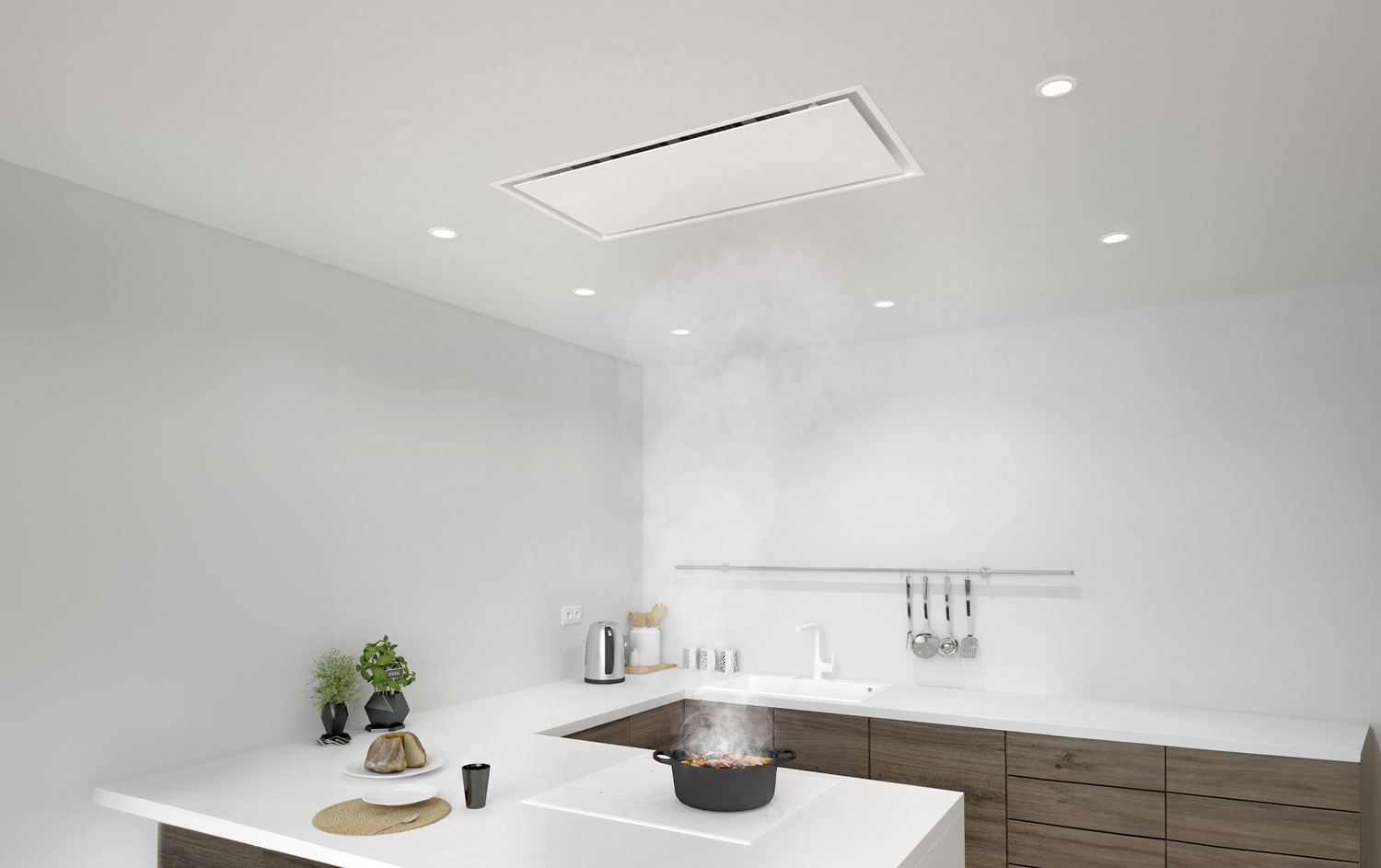The cooking zone is, along with the sink area, the functional heart of any kitchen.
And here’s a rule that never fails: a beautiful hob without the right hood won’t perform well, and a powerful hood without the right hob won’t either.
For years, hobs and hoods have been chosen as if they were independent elements — but in reality, they form a single system.
The golden rule
The hood and the hob are a team, and choosing them separately is… a mistake.
Extraction, power, size and placement are tightly connected to the final performance.
- A poorly sized hood ruins even the best hob, and vice versa.
That’s why, before buying, it’s worth considering them as a whole.
If you want more technical details, you can read our complete guide.
Choosing the hob according to real use: power, zones and flexibility
Before thinking about aesthetics, ask yourself:
How often do you cook? For how many people? Do you use large pots or cook several dishes at once?
– If you cook daily or for several people, choose hobs with large zones or bridge functions that adapt to the size of your cookware.
– If you often cook multiple dishes at the same time, a 3 or 4-zone hob gives you comfort and power. See: Vitro 834 Slider Bridge.
– If you cook occasionally or live alone, a simple, practical and good-quality hob is more than enough. See: Vitro Basic 603.
Key idea: define usage first. Then think about placement and aesthetics.
Technology should adapt to your lifestyle — not the other way around.
Choosing the hood according to the hob: size, power and placement
If the hob is the engine, the hood is the kitchen’s breathing system. They must work in sync.
Basic rule: the hood should cover at least the width of the hob — ideally 30% wider — to ensure efficient, even extraction.
Power & airflow
Extraction must be sized according to your kitchen’s volume and how intensely you cook.
Open-plan kitchens or islands require higher airflow; closed kitchens can work with lower rates.
Placement
The hood must be installed at the right height to capture fumes without blocking visibility or comfort. A proper installation is as important as power.
When hob and hood are designed to work as a system, noise decreases, efficiency increases, and the space stays clean and uncluttered.
Connected technology: cooking with almost no effort
Today’s kitchen trends prioritise fewer gestures and more fluidity.
In this context, hob-to-hood connection — like Frecan’s H-Connect range — is a highly valued solution.
These hobs allow you to manage all hood functions directly from the hob itself, centralising control for a more practical and efficient kitchen.
See: H-Connect 603 Slider
See: H-Connect 603 ELC
See: H-Connect 604 Slider
Aesthetic continuity
Another great option is surface-mounted hoods, which free up visual space and maintain clean lines, especially in open kitchens.
These solutions prioritise discretion and integration — two of the defining concepts of 2025 kitchen design.
Ceiling-integrated hoods, tall-unit integrated models or, as in this case, hoods placed directly on the cooking surface offer a cleaner visual result and a more fluid experience:
no visual obstacles, no interference with lighting, and no loss of extraction power.
See: Flow 4
See: Flow 4.4 (78 cm) / Flow 4.4 (60 cm)
See: Flow Pour
See: Flow 5.3
See: Flow 5.4
In summary
The perfect cooking zone isn’t the one that stands out the most, but the one that works without you having to think about it.
When hob and hood are well coordinated, the kitchen gains comfort, efficiency and visual harmony.
It’s not only about power or aesthetics — it’s about creating a space that supports the way you cook and live.
A good decision here shows every day, because when the kitchen works well, you enjoy it more.
More information at www.frecan.com
Discover more
Cómo acertar con la zona de aguas según el estilo de tu cocina


Comentar